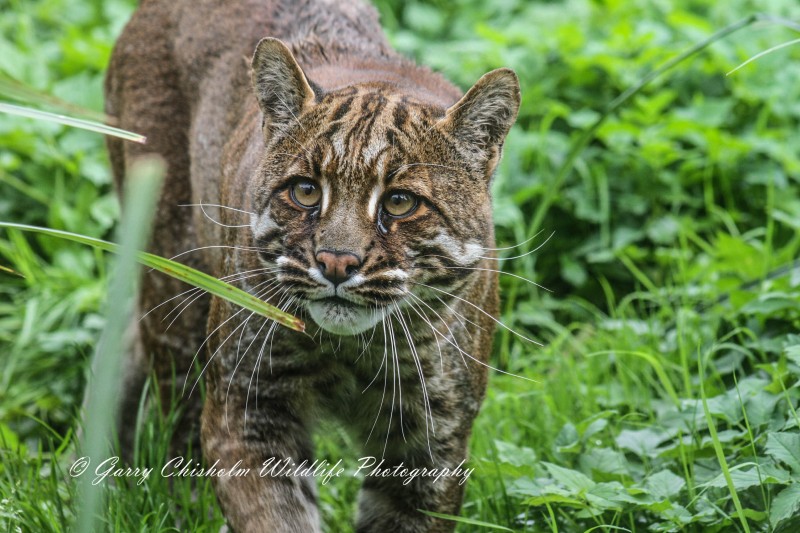An Animal Mad Photographer Specialising in Zoos
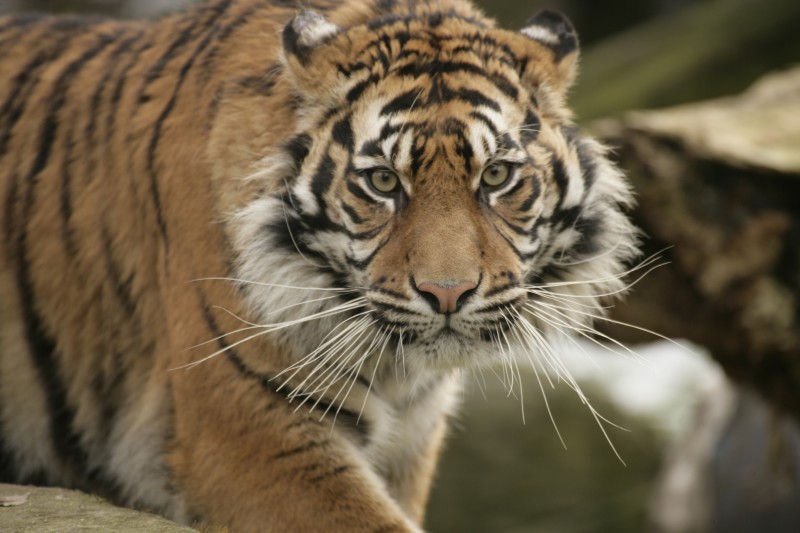
Tiger at Thrigby Hall
At home in the landscaped grounds of Thrigby Hall is a special collection of rare animals from Asia. You will find endangered tigers, huge crocodiles, noisy gibbons and many more exciting animals. A unique network of raised walkways allows you to get up close and personal with these magnificent creatures. The park is wheelchair and pushchair friendly and benefits from free parking, picnic areas, café, gift shop and play areas to suit children of different age groups.
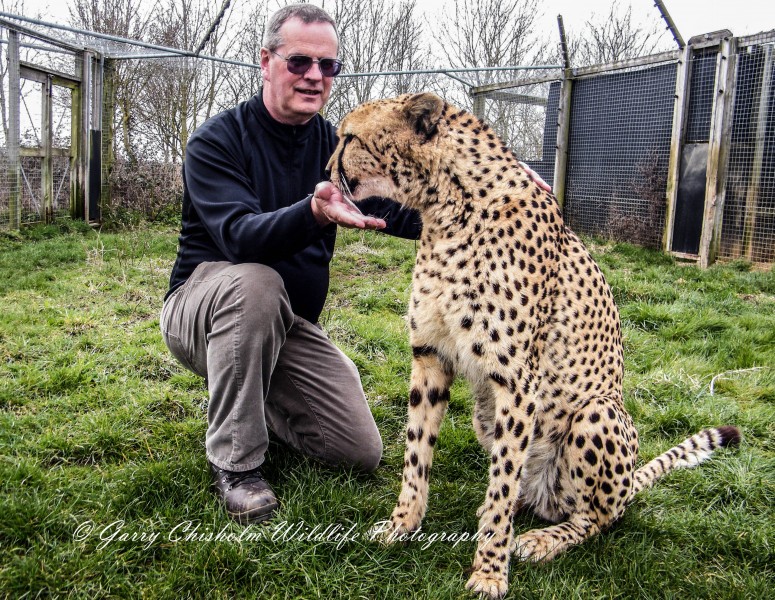
Pictured above: Garry with a cheetah
For animal mad Garry Chisholm, 57, combining photography with his love for wildlife was an obvious decision. Working as a Loss Prevention Officer by day in his home county of Northamptonshire, he uses every opportunity to indulge his passion.
“I’ve always enjoyed photography, going back to my teenage years, but it wasn’t until 2013 that I started to take a more serious interest in it. I booked myself onto a photography workshop at the Wildlife Heritage Foundation in Kent as a treat for my birthday, and the passion has grown ever since. I don’t have any official camera training but have picked up some great tips along the way when attending wildlife workshops around the country.
“I specialise in wildlife photography as animals have always fascinated me, so it seemed natural to combine my love for animals with that of photography. For me the two go hand in hand.”
The UK’s Best Wildlife Photographer?
Garry’s become a very successful photographer in a short space of time. So much so, he was voted the UK’s best in two categories last year.
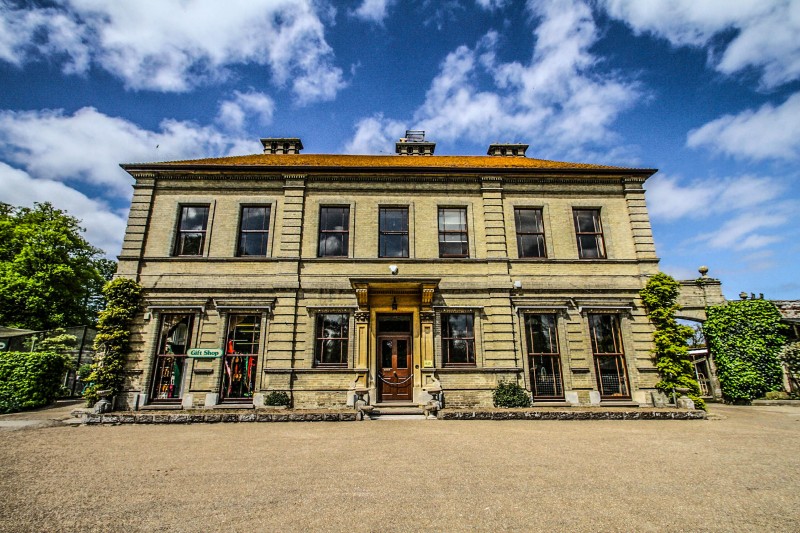 “I’ve met and built some good relationships with fellow minded photographers around the world on the Pixoto website, where you enter your images to compete against others on a daily basis. Receiving positive feedback from other photographers whose work I admire greatly is a wonderful feeling. I was ranked 3rd in the world on the site for wildlife photography (2nd in the UK) for 2014 and though I slipped to 4th globally in 2015 I was delighted to be ranked #1 in the UK for last year both in Wildlife Photography and in Black and White images.”
“I’ve met and built some good relationships with fellow minded photographers around the world on the Pixoto website, where you enter your images to compete against others on a daily basis. Receiving positive feedback from other photographers whose work I admire greatly is a wonderful feeling. I was ranked 3rd in the world on the site for wildlife photography (2nd in the UK) for 2014 and though I slipped to 4th globally in 2015 I was delighted to be ranked #1 in the UK for last year both in Wildlife Photography and in Black and White images.”
North Norfolk Wildlife
Garry is a regular visitor to North Norfolk, especially enjoying the various zoos and conservation sites it has to offer.
“Whilst on holiday in North Norfolk last year, I visited Thrigby Hall and Amazona Zoo. I also took in Africa Alive, Banham Zoo and the Suffolk Owl Sanctuary at Stonham Barns. I am continually drawn back to Thrigby Hall because it’s such a quaint little animal collection. I’ve also formed a lovely bond with Kubu, the male Sumatran tiger and also had the pleasure of giving Nimbus, the clouded leopard, his name.”
Thrigby Hall
Thrigby Hall Wildlife Gardens is a conservation zoo and gardens situated in the grounds of Thrigby Hall, in Great Yarmouth. Surrounded by North Norfolk countryside, it is home to various endangered animals from Asia, Africa and the rest of the world.
“I first found out about Thrigby Hall whilst researching the internet for places to visit,” Garry said. “I first visited in mid-October 2014 and have been back several times since.
“It’s one of the smaller animal collections in the UK but still boasts a variety of species. Their cats include Sumatran tigers, Amur leopards, clouded leopards, leopard cats, wildcats and the very rare Temminck’s gold cat.
“In the aviary, they have exotic and rare bird species like Blyth’s hornbill, hill mynahs, Java sparrows and Bali starlings. Other birds they have include stunningly coloured mandarin ducks, cockatoos, eagle owls and peacocks. The Swamp House has crocodiles, alligators and a variety of snakes, while separate enclosures home otters, red pandas, meerkats and warty pigs. You can also see monkeys like gibbons and macaques climbing in the trees, feeding or grooming each other.
“I always enjoy seeing Kubu the tiger, but I don’t know of another place which offers such amazing opportunities to photograph mandarin ducks. I’ve spent far too much time with the tigers, so that’s definitely my favourite area. You can get very close to them when they’re resting on the upper platform, which kids seem to love.”
A Varied History
The Hall itself was built in 1736 by Joshua Smith Esquire and the grounds were then designed in the style of William III. The Willow Pattern garden is bound up in an ancient legend, where the Mandarin’s daughter fell in love and eloped with her father’s poor secretary.
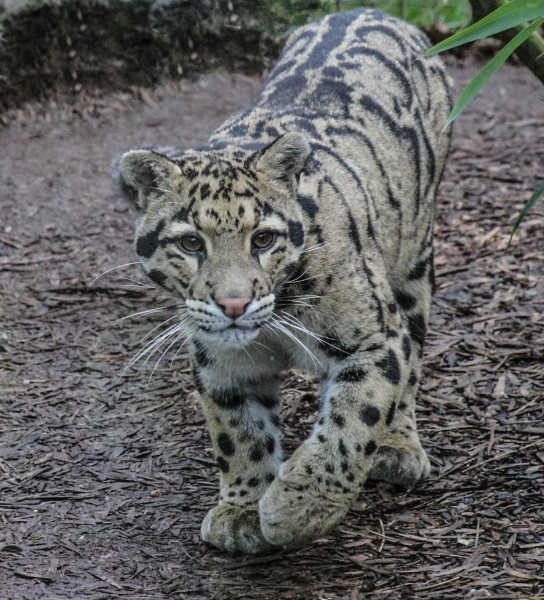
Pictured above: Nimbus, the Clouded Leopard
They were then transformed into doves. Renowned for its willow trees, it’s also home to a variety of the Hall’s birds, including endangered cranes.
The Wildlife Gardens were opened in 1979 after Ken Sims returned from Malaysia where he’d held a variety of animal-focused jobs. He’d been inspired by David Attenborough and wanted to learn more about the wildlife of the region. On his return, he was involved with supplying rare animal species to zoos and then set up Thrigby Wildlife Gardens to help breeding efforts.
Garry said, “The Hall are heavily involved with conservation and breeding work. Kubu the tiger was born at the Wildlife Heritage Foundation and therefore will be part of the international endangered wildlife breeding programme. Last year they had two new Snow leopards born on the site – also as part of the breeding programme.”
Tips for Other Budding Photographers
Garry had some parting words of wisdom for budding photographers and anyone else interested in visiting Thrigby Hall Wildlife Gardens.
“Like any gardens, I think the best time to see them is in the summer. The grounds can get extremely wet during the colder months, so it’s worth considering this when choosing what footwear to put on.
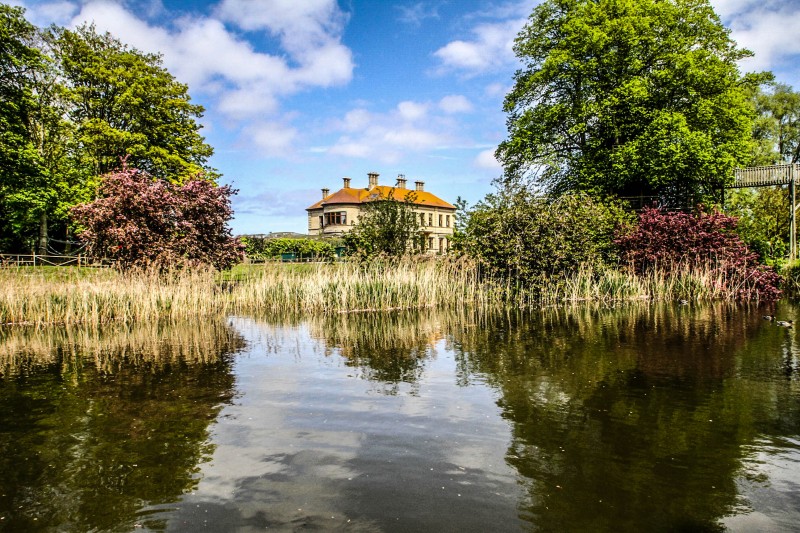
Pictured above: The gardens and pond
“To anyone else thinking of getting into animal photography, I’d recommend really understanding your own camera! I was the original aim and click type photographer when I first started. It was only by realising what my camera was capable of that I was able to improve my work. Aside from that, the single most important advice is to place as much importance on the background behind your subject as on the subject itself. Given pretty much all of my animal photography is of animals in captivity, the challenge for me is to try and make the image as natural as possible. This means avoiding fences, posts, etc in the background.”
A Range of Facilities
Garry was very impressed with the organisation of the Hall and its facilities.
“I’ve only had a few conversations with staff but they’ve always been beneficial. What is very clear is the staff absolutely love their work and the animals they care for.
“They have a nice café, but it’s only open during the medium and high season. On one very cold day I had a sausage roll to die for! The gift shop is quite cosy but offers a good selection of souvenirs and also has refreshments for when the main café is closed.
“For me, the entrance fee is worth it as my visits range from 3-6 hours. No matter what venue I visit, I always make a point of going around it at least twice. All too often animals which couldn’t be seen on the first round can often be seen on the second or third round.”
Price and Parking
The Hall is open all year round and offers free parking. Prices range from £13.90 for adults to £9.90 for children over 4yrs, Party of 6 people ? Visit their website to obtain discount voucher for £1 per admission discount.
Location
Thrigby Hall Wildlife Gardens are located in Great Yarmouth, 1 hour and 11 minutes from the Blakeney Cottage Company HQ in Blakeney.
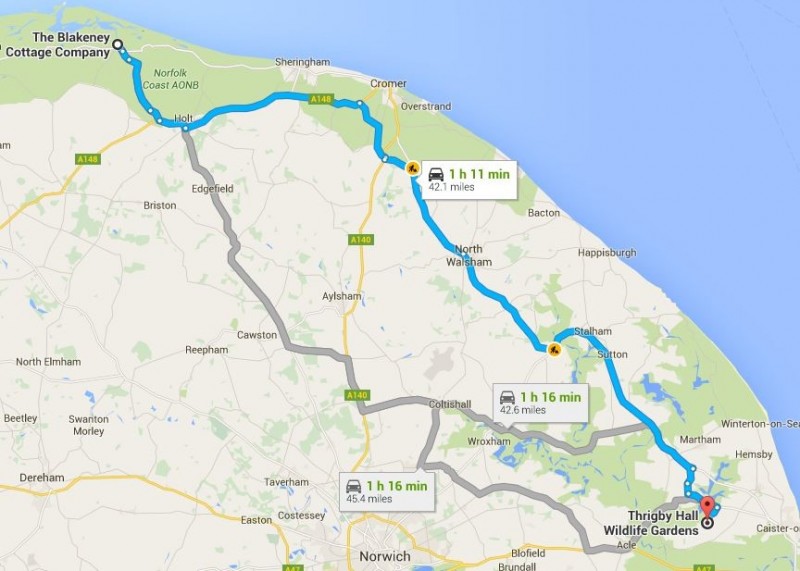
Location map – The Blakeney Cottage Company to Thrigby Hall





